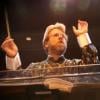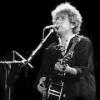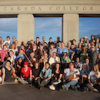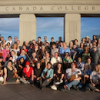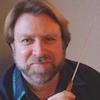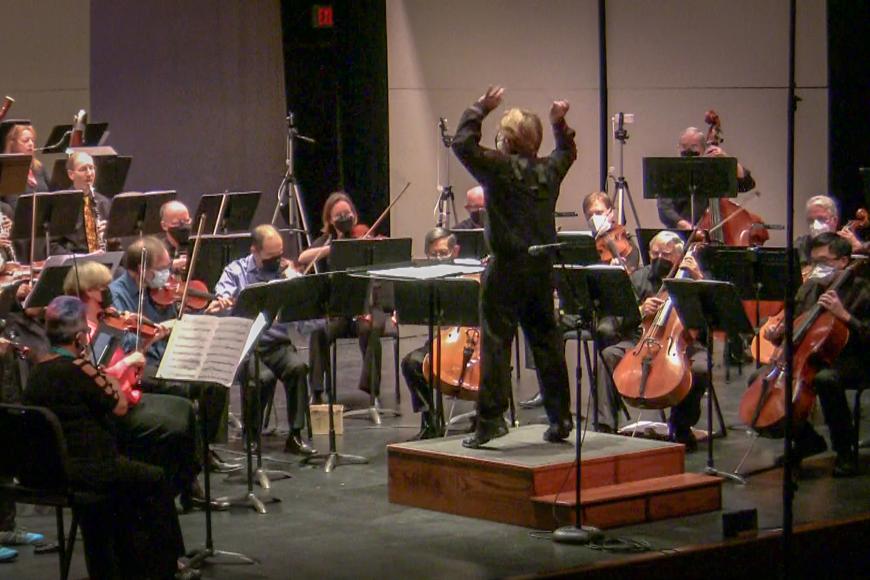
The Redwood Symphony is the volunteer community orchestra that thinks big. Music Director Eric K has led his musicians in many large and complex compositions. On Saturday, April 9, at the Cañada College Theater in Redwood City, the big and flashy new piece was Absolute Jest by John Adams, written for and first performed ten years ago by the San Francisco Symphony up the road. It has all the dense writing and complex interlocking rhythms that make Adams’s work so challenging to play. Redwood Symphony has essayed Adams before, but rarely anything as large as this, a single movement of 25 minutes.
The first additional wrinkle in Absolute Jest is that it’s built entirely out of Beethoven scherzos. Mind, it doesn’t sound like Beethoven, as Michael Torke’s Ash does; the tone color and flow of phrases are entirely the controlled chaos typical of Adams. It’s that the rhythmic patterns that Adams compresses and extends into irregular stutters are all derived from Beethoven scherzos. Frequent appearance is also made by little snatches of actual Beethoven scherzos, the Symphony No. 4 and the Quartet Op. 135 being most prominent to my ear. They sound like Beethoven nuggets embedded in an Adams soup, unlike Luciano Berio’s Schubert — work Adams compares his own to — which sounds like Schubert with graffiti scribbled over it. I found it easy enough to assimilate Beethoven’s bold pulsations to Adams’s more jittery ones.
The other additional wrinkle in Absolute Jest is also easier to assimilate than one might think. The piece is a concerto for string quartet and orchestra. This idea is less disintegrative than it may sound, for the quartet plays mostly as a unit, as it would in a tightly-wrought chamber work. Though the individual instruments go off in separate parts, and there are a few solo passages, there is none of the extended individual peacock display from competing soloists typical of a double concerto.
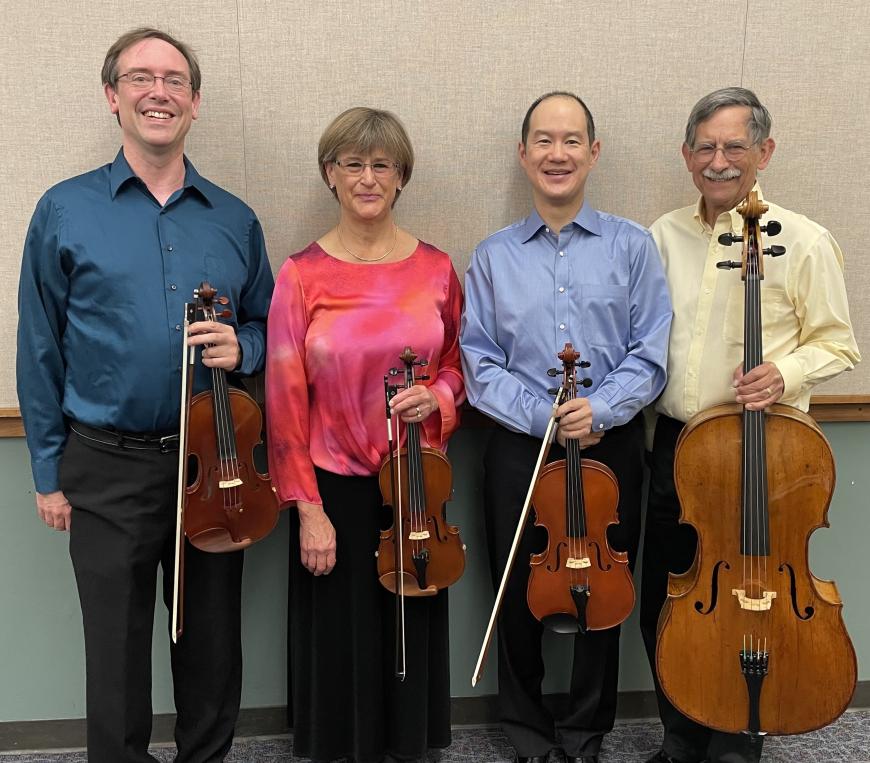
The soloists here were members of the Grace Note Chamber Players ensemble: violinists Claudia Bloom and Geoffrey Noer, violist Andrew Lan, and cellist Glenn Fisher. In introducing the work, Dr. K mentioned that having these skilled professionals as soloists helped keep the orchestra together in what he described as the “magnitude and difficulty” of Adams’s writing.
It worked out pretty well in the performance. The chaotic rumble of the music tumbled forward at a continual pace with little unintentional stumbling or awkwardness — there are some intentional stutters — and the synthesized substitutes for harp (Redwood currently lacks a harp player) and keyboards for which there was no room on stage worked well enough. As he usually does, Dr. K got his musicians through the hazards of the score and out the other side intact.
The problem with the performance, though significant, was not the result of lack of enterprise of anyone on stage. Like any volunteer group, the Redwood Symphony is dependent on the players it can get. This week, at least, besides lacking a harp player, the orchestra was seriously short in the basic string sections. The winds and brass were present in full cry, while the soloists, which Adams directs to be “lightly amplified,” were rather heavily amplified. The result was that the interplay between the soloists and the string sections they sit in front of, a major feature of Adams’s composition, was virtually inaudible. The eruptions of Beethoven quotations were also less startlingly bold than they could have been. This performance was more a praiseworthy effort than an ideal presentation of Adams’s curiously odd ideas.
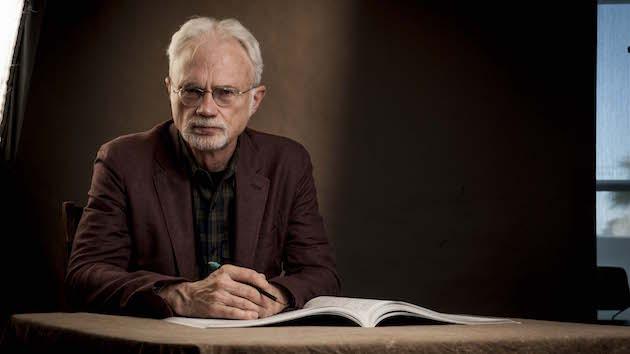
A similar problem of balance, albeit without the amplification issue, beset the other two works on the program. These, at least, were repertory brilliantly chosen to mesh with the Adams without conflict of idiom. Beethoven’s Symphony No. 2 is thoroughly energetic and the most cheerful of his nine, and it’s matched well with Aaron Copland’s Outdoor Overture, a bounding and optimistic work of his populist period. Even in the Beethoven, which requires fewer wind or brass players than the others, the bones of the wind parts stuck out conspicuously, and they dominated the tutti passages.
But while there was a rough, unpolished quality to the playing, common in volunteer ensembles and surely exacerbated by the ordeals of the pandemic, as artistic creations the performances were as dramatic and exciting as could be imagined. This was a Beethoven Second that roared and thundered like a mid-period Beethoven work. Regardless of any difficulties, the concert was eminently enjoyable. The efforts of Dr. K and his musicians made it so.
Incidentally, this is the third orchestral concert I’ve attended in the last month, by three different orchestras, that began with a performance of the Ukrainian national anthem, a practice worth grateful acknowledgment.


